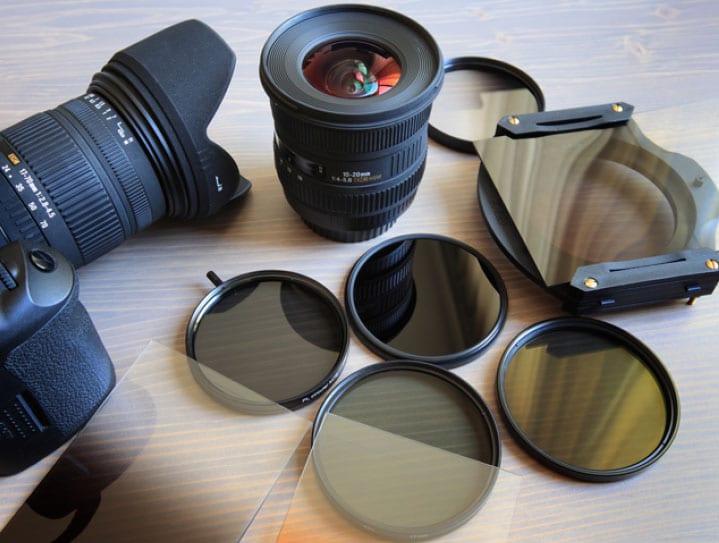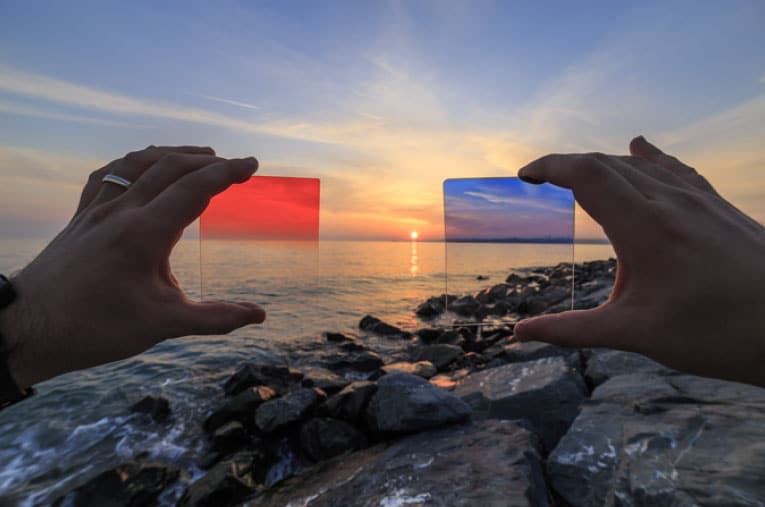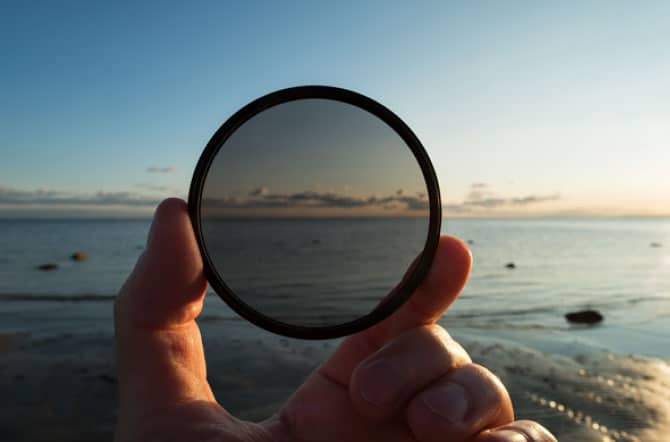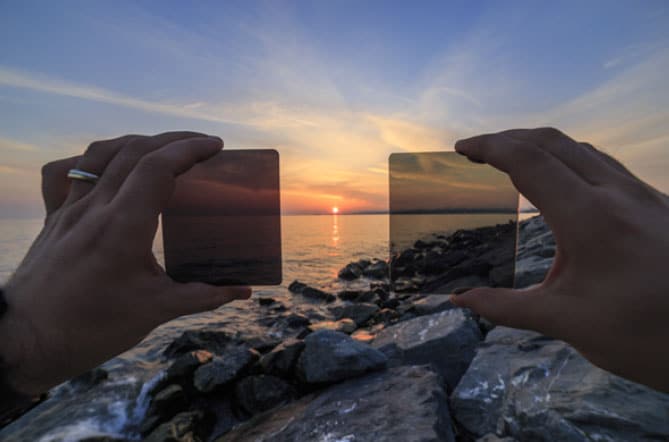Lens filters can serve numerous purposes. They can enhance colours, reduce reflections or simply protect your lens. Whether you need to purchase a filter will depend largely on what photography genre you shoot. For example, landscape photographers rely heavily on various lens filters, while portrait photographers rarely use them.
Lens filter overview
UV filters are those that salesmen will recommend to you to protect the front element of a lens from dust, dirt and potential scratches.
Polarizing filters reduce reflections, enhance colours and increase contrast. Perfect also for darkening the sky or reducing haze. They are typically circular for DSLR cameras, allowing easy control of the effect of polarization.
A favourite for landscape photography is a Neutral Density (ND) Filter. ND filters reduce the amount of light entering the lens, thus allowing the photographer to shoot with a much slower shutter speed. Great for situations where the photographer wants to create motion blur. For example rivers & waterfalls, cloud movement, moving people.
Colour warming or cooling filters were popular for film cameras, but are rarely used in todays digital world as photographers generally apply them in post-processing.
Close-up filters are only used for macro photography. They allow a lens to focus much closer to a subject than would otherwise be available.
Then there are numerous special effect filters such as star filters, softening, bokeh shapes etc.
Circular / screw-on filters
The most popular lens filters are circular, screw-on filters. They can easily be mounted directly onto the filter thread in front of a lens. Before purchasing a screw-on filter, you’ll need to check the size of your lens filter thread. If you look on the end of your lens, it will display a ‘mm’ number. For example, 77mm.
Square filters
Square lens filters are popular for professional landscape photography. A filter holder attaches to the lens filter thread and can hold one or more square filters. The brand you choose may impact image quality. Some are better than others when it comes to quality. I personally recommend Lee filters or NiSi brands. The great thing is, the holders are compatible with both brand filters.
Are all lenses compatible with filters?
It’s important to know that not all lenses are directly compatible with filters.
Some lenses (especially ultra wide lenses) do not have the threads to screw on a filter. If this is the case, you’ll need to purchase a ‘Filter Holder Kit with Adapter Ring’ that is designed for thread-less lenses so you can utilise a filters.
What about hard edge and soft edge graduated filters?
These rectangular hard-edge filters are best used where the sky is much brighter than the foreground and the horizon is flat. The problem with hard-edge filters is that the horizon is rarely flat with no mountains or trees.
Soft-edge filters have a smoother transition than the hard-edged ones, making it less obvious that a filter was used. Personally I always recommend soft-edge filters over the hard-edge. Both are typically used with filter holders.
If you are yet to purchase your first lens filter, I highly recommend getting a ND filter for landscape photography. I rarely leave the house without one. Whether you buy a circular or square filter is personal preference.
ND filters come in different strengths. I find 10 stop and 5 stop ND filters are the most useful (in that order).



